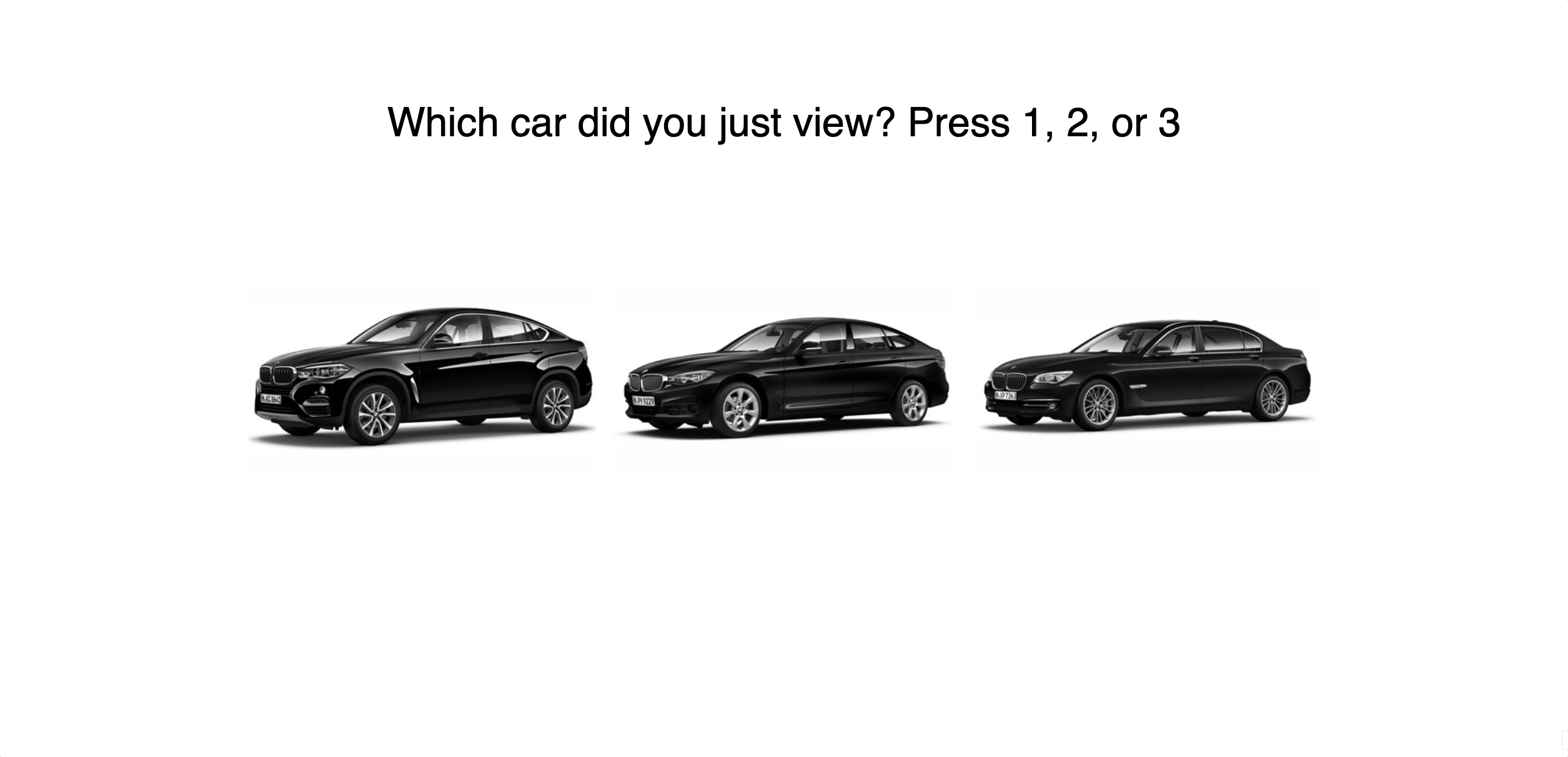Cambridge car matching¶
Large inversion effects are not specific to faces and do not vary with object expertise
Abstract¶
Visual object recognition is impaired when stimuli are shown upside-down. This phenomenon is known as the inversion effect, and a substantial body of evidence suggests it is much larger for faces than non-face objects. The large inversion effect for faces has been widely used as key evidence that face processing is special, and hundreds of studies have used it as a tool to investigate face-specific processes. Here we show that large inversion effects are not specific to faces. We developed two car tasks that tap basic object recognition and within-class recognition. Both car tasks generated large inversion effects (~25% on a three-choice format), which were identical to those produced by parallel face tasks. Additional analyses showed that the large car inversion effects did not vary with expertise. Our findings demonstrate that non-face object recognition can depend on processes that are highly orientation-specific, challenging a critical behavioral marker of face-specific processes.
Reference¶
Description¶
An image of a car is shown very briefly (400~ms) and then participants must identify which car was shown in a 3AFC task. Chosen as a measure of object perception/identification.
Example¶


